Half the time when you work abroad you find that you can become anonymous in the new culture if you have some grasp of the language and norms. More than once in France and Italy someone had asked which part of the country I was from as my accent was unusual. No doubt someone with poor hearing, but it can happen if you’ve successfully picked up enough of the language. That was going to be very unlikely in the Gulf States.
I stayed in Muscat for a few days and then flew down to Salalah, Oman’s second city just a hundred miles from the border with Yemen. Salalah is situated on a coastal plain facing the Indian Ocean, with a high plateau behind it that leads to the Arabian Desert. It was Eid al-Fitr when I arrived and almost everything was closed. I was taken to my apartment by a young lad from Kerala, Vinod, and spent the next few days walking to get my bearings in the town.
An old Omani man came up to me in the street and said, “Thank you”. For what, I thought. “For coming to Salalah; it’s good you are here to visit.” In a rough-edged English we chatted for a while. Apart from some military personnel on the airbase and a few engineers there were very few westerners around. The majority in the streets were the Indian and Pakistani men who ran the shops and the Omanis who went shopping. Just occasionally you’d spot an Omani woman in full length black abaya and veil.
My job at the college was to teach English to teacher-training students. Two more teachers arrived, Alec and Tom, and together we tried to build up an English Unit for the college, virtually from scratch. The teachers from the previous term had been fired and had either not kept records of their students or they had destroyed them. Although I had a word-processing typewriter with me, as soon as Windows 98 came out I was able to buy a fully fledged computer and a raft of software of dubious origin. In a cupboard at the college I found a copy of Photoshop 5 that no one had thought to install.
We had access to the Web, such as it was in 1997, and limited television as well as the BBC World Service, but otherwise we were somewhat cut off. Fortunately, television included MTV, so I could at least fill up on music at home. There weren’t many programmes available but ironically, given Omani culture, the most popular were Baywatch and Scooby Doo.
Talk on Corners by The Corrs had been released quite recently and listening to Andrea Corr’s tin whistle on MTV reminded me of a long forgotten sound. I gave it attention every time it came on in the background until one day, a “Fuck it” moment occurred and I went down to the market to buy some Indian bamboo whistles to learn to play for myself. Re-listening to lost sounds became a focus for me as another pastime to break the monotony of life in the Gulf. I spent some time on a clarinet but then changed to the flute.
Going around the music shops in Salalah I came across some of the names I’d listened to years before. Remembering Andy Kershaw’s international radio programme in the mid 1980s and having been a fan of Osibisa’s Highlife music in the 1970s I was quick to pick up on artists like the Bhundu Boys and Salif Keita. In Cambridge I’d made tape recordings of Algerian musician Cheb Khaled that reminded me of the music I’d heard in Corsica and now Khaled had recently brought out a new CD.
Some time after I’d bought the flute, I started to listen more closely to that album and noticed that the flute player was neither North African nor French. I discovered the flute and sax of Dave McMurray which led me to the jazz of Bob James, who led to Marcus Miller, who led back to the Miles Davis CD, Tutu, that I’d bought in Italy and always kept with me.
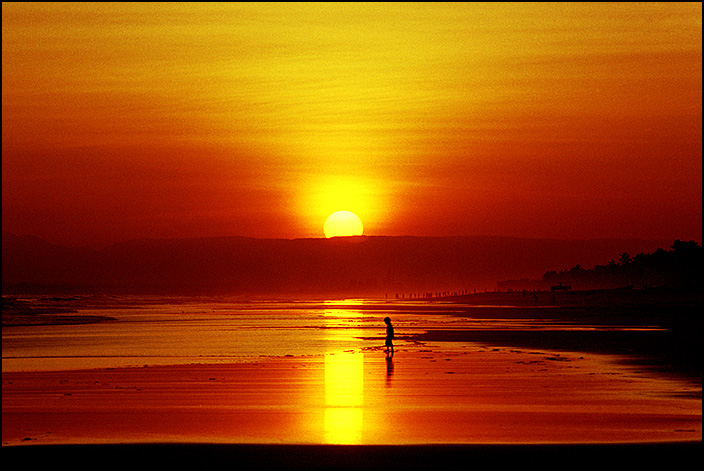
Haffa
Photography and music started to take over from sculpture in my creative life, while I also enrolled on a Master’s course to ensure that I would get my contract renewed. The day-to-day work of the college continued and was made more interesting by taking on course development projects with the Ministry of Higher Education in Muscat and putting up the first websites of student work. I was appointed head of the English Unit. Eventually I would be able to pay for the MSc and put by enough money to get the front of my house fixed so that the converted stable could become a home. “Home is where your bank statements arrive” I used to say, and that was likely to continue for a while.
There were occasional conflicts, small things perhaps but they were indicative of an underlying cultural tension. The students were generally keen to explore new ideas and to hear about and understand my life in Europe, but a few of them also maintained firm barriers. A Tunisian science teacher had suggested to his class that they should look up the works of Charles Darwin since evolution was an important field in biology. Following a student complaint to the highest religious authority in the country, the teacher was immediately fired from his job and given seven days to leave the country. One day I took a cassette into the class to provide some gentle background music for a test they had to do. A student called me out on this saying it was forbidden, haram, to play music, and his opinion carried since no other student dared contradict him. Another student, who I knew to be generally a very playful type of person, came into the class and greeted me one morning with “Death to America!”
I was living in Salalah for ten months continuously and then had July and August free to fly back to Europe. I took trips to Bologna, to Freiburg in Germany, and on one occasion visited the university in Surrey for a few days. It wasn’t a wild lifestyle, but it was the first time I had a bank balance that was actually growing rather than returning to zero at the end of each month. This was the first time I could choose what, where, and when to eat, or to buy clothes or to buy camera film, just on a whim maybe, it was the first time ever.
On the other hand, I was on my own. In 1998 I returned to Oman via Paris and stayed four nights in a small hotel in the Marais area. I don’t know if the taxi driver who dropped me off at the hotel knew in advance what he was doing, but when I asked him the fare in French he seemed to say, “Ils … cent trente francs.” I paid him a hundred and thirty, when he must really have said, “Ils sont trente francs”. I was a hundred francs down on the first day.
The main purpose of my trip was to visit the Rodin Museum and to photograph the streets. Of the people from Paris I’d met in Privas years earlier I don’t think I’d ever known their surnames, and so had no way of contacting any of them. Except one, Anne, who I’d spent a night with at the end of the cherry season. We’d stayed in touch briefly afterwards and I found her in the phone book. The question was, should I call? After all, some twenty-two years had passed and I was no longer the same person.
I deliberated over this as I walked around on the second evening. I had just stopped next to a phone box to check the map when two people came up to me to ask directions. Although she was speaking in French it was clear from her accent that she was American. I seized the opportunity to prolong the chat and eventually asked Amy what she would do in my situation. She immediately said I should phone Anne, and that was enough for me. I agreed to meet up with them at Shakespeare and Company, a bookshop a few streets away, after I had made the call.
Anne was at home when I called and she remembered me. We met the day after for lunch and it was intriguing for both of us to reflect on the changes that life brings. However, although she wrote to me later we didn’t maintain the contact. With Amy on the other hand, I stayed in touch.
I felt that spending more than three years in Salalah would be damaging so I moved to another teacher-training college in 1999. There was surely a limit to how often you could enjoy chicken biryani as a treat, and Sohar was closer to Muscat which could perhaps provide more social contacts and entertainments. The team of teachers was now larger and Ministry funding had been expanded to cater for a far greater number of students. We could go to secluded beaches for barbecues, to mountain wadis for picnics, to Muscat for the Lebanese restaurants and music shops, watch Bollywood movies at the open air cinemas and visit other teachers in the north of the country. It had been several years since I had last cycled or done any long distance running, but a group of us started training for a road race in Dubai just after New Year.
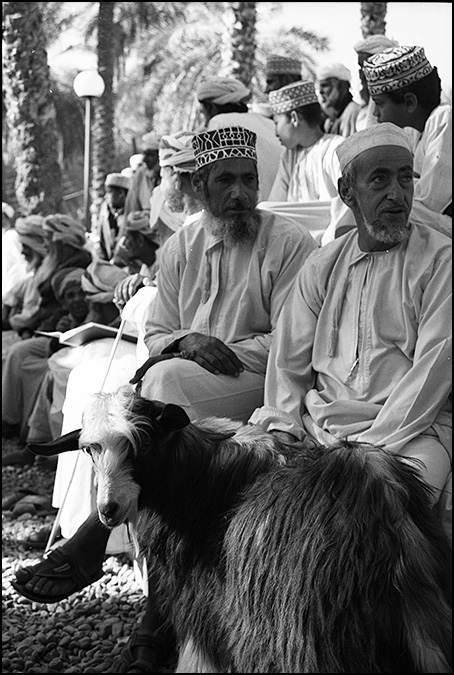
Nizwa
While in Salalah I had set up an exhibition of student art for the college which then developed into an annual joint national exhibition for all six colleges. Continuing to support this I started an art class at the Sohar College on one of my free afternoons. We were short on materials but at least we had space to work in and the students were keen to try out new ideas.
I’d completed the first part of my MSc and now needed to find a suitable project to work on. Over the previous two years I had been practising with a wide range of computing software to develop online language learning and testing materials. I felt this was probably the most useful direction to take and started looking for colleges that had some commitment to developing information technology for teaching. In the end, I discovered that a branch of the agency I was working for had already set up a team doing just this in Malaysia.
It seemed a good opportunity to leave the Gulf. I could go to Kuala Lumpur to work in the software office until one of their new multi-media centres was ready for me to start as a manager. Although I finished work at the end of June, my contract in Oman was until the end of August and included two months paid holiday. Starting in Malaysia at the beginning of the month meant I got two salaries for August. This enabled a short trip in between.
My friends in Bologna invited me over for the three week gap. I’d known Adri and Mirko since she started work with me at the language school there and we’d always got on well. Now though they had two kids so my occasional visits were like a having a babysitter parachute in. I spent hours kicking a ball around on the patio with six year-old Alex and practising Bolero on the flute.
One morning I left the house to take the bus into town to join them in their shop in the city centre. I usually went to one of the bars first for a coffee and then waited for the bus. A car pulled up and the driver asked me for directions. As they were foreign tourists the conversation fragmented briefly into Spanish, French, and English, as well as the Italian I was trying to maintain my grip on. It was an amusing moment but I didn’t dwell on it further. Yet a couple of hours later these same people came into the shop to see Adri, and they recognised me. It was the beginning of a long relationship with Adri’s Uruguayan friends, and ten years later I was to visit Montevideo.
The year in Malaysia was destined to pass quickly. Having lived in squats and tenements, bedsits and barns and bell-tents, I now had a modern apartment on the 17th floor of a tower block, about ten minutes walk from my office. I had an office to myself. I had been promised a contract by the company but they reneged on that which meant I remained on a tourist visa, with the consequence that I could not risk buying a car for myself.
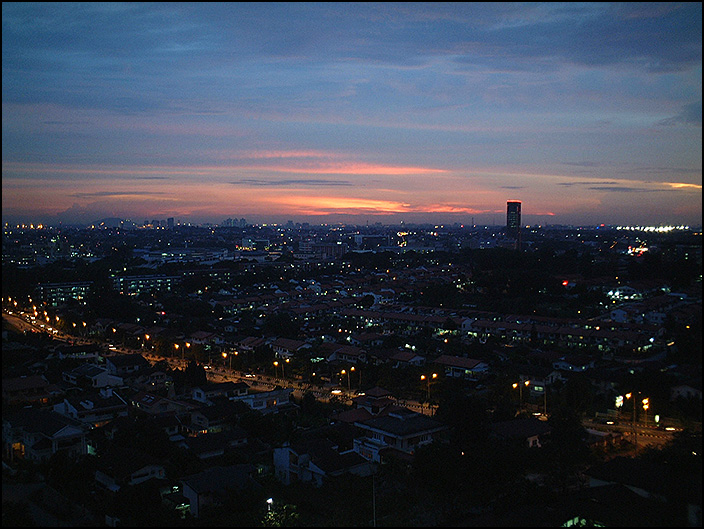
Petaling Jaya
The transition from classroom teaching to writing self-study materials for language students was not too difficult. Complete beginners I had worked with in Italy were taught a number of essentials with which to build their communication – positive and negative statements, question formats, and positive and negative responses. If, for example, you ask a student, "Is it raining?" the simplest answer they can give will be either, "Yes" or "No". If instead it is appropriate to ask, "Is it raining or snowing?" then the response must be a statement – you cannot simply respond with a "Yes".
This almost mathematical aspect of language is paralleled by the Boolean operators, AND, OR, and NOT. While they are commonly used in search terms for databases, they also govern the rules of possible question types – multiple choice, multiple selection, true/false, yes/no, etc, as well as enabling computer adaptive tests with automated adjustment to the level of the student.
I had studied html code briefly when I first created some online web pages in Oman, both for college work and for my own photography. I now had to navigate between different code languages for Asymetrix ToolBook, and Macromedia's Director and Flash software. These proved much more difficult to learn as I was using OpenScript for work and ActionScript in my spare time.
Although I had never spent much time with my mother we had always written letters, a habit ingrained through the time spent at boarding school. Now in her late seventies it was for her to talk about the weather, the food, and the goings on in the home where she lived. In late December I received an email from my sister saying that she was now very ill. I wasn’t surprised by this as health was one of the subjects my mother would never talk about, money and sex being the other two. The next email I received on Christmas Day said that she had died early that morning.
Of course it was sad, but it was also inevitable as she had started smoking cigarettes again. On one of the last occasions I saw her she told me she was tired of living, and I suspect the cigarettes were intended to accelerate her decline. Subtle references she had made over the years indicated a self-identification with Miss Haversham, a character from a Charles Dickens novel who was consumed by her own misfortune.
Her final letter to me, posted after her death, was wholly impersonal. She had talked about the weather, the food, and the staff in the home, but it was unusually lacking in specifics with no indication of the season let alone the month when she wrote it. It was also the very first letter where she had not written a date at the top. It could have been written months beforehand.
The direction of the work gradually shifted in focus and it seemed less likely that I could easily create a project for my Master’s out of the job. First one, and then the second of the new centres were closed down due to poor take up on the back of poor management decisions. On the plus side, the creative relations we had within the team were good, and we able to press ahead with some original work.
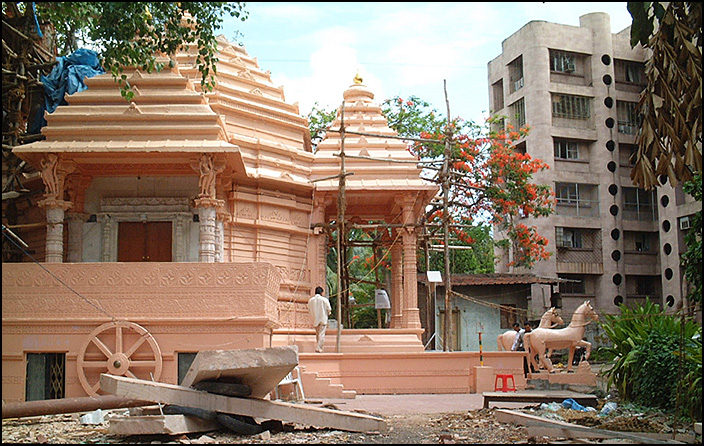
Mumbai
There were trips to Mumbai and Melbourne, but when the TESOL conference came up in St Louis that year, I figured it would be beneficial to go, at least to discover how other companies were developing their online learning. I’d been in touch with an old friend in Arkansas who taught English and since he was also going to the conference we agreed to meet up. I wrote to Amy to see if she was busy and she invited me over to stay in Houston as a break in the journey. Positive planning led to a positive trip with all the ducks falling in a neat row without much effort. Always room for surprises of course, and the first person I encountered when I walked into the conference centre in St Louis was a teacher I’d known in Oman.
Going east via Tokyo, I travelled almost half way around the world from Kuala Lumpur to St Louis. When I was nineteen, I’d gone west to Chicago from London, and Chicago was now less than an hour away by air. I was just short of completing a full 360° circuit of the globe as 2.5 degrees of longitude lay between St Louis and Chicago. I was missing out only that short stretch.
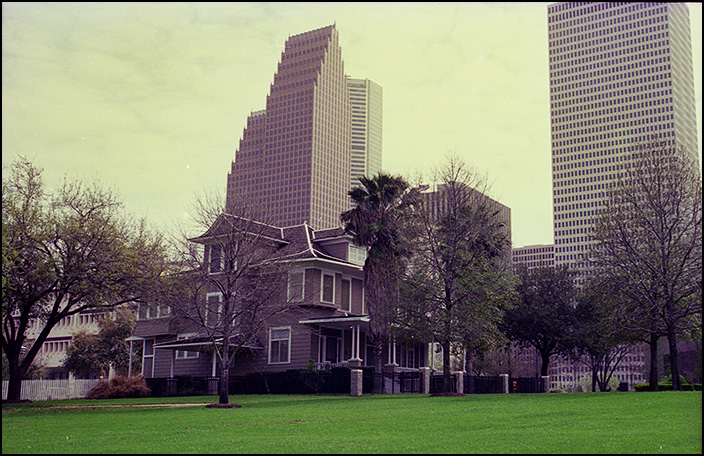
Houston
I’d been making regular trips to Singapore and had built up a relationship with a woman I knew there. She was bipolar and while that was a difficulty I was almost used to by now, it caused a lot of grief and our relationship seemed less likely to last. However, when my company decided to shift the software development operation out of Malaysia to Brunei and offered me a post there I used the intervening time to look for work in Singapore instead.
By chance, I found a university college that was expanding its investment to take on more students. It was a satellite college of California State University which had devised a programme to offer two years of an American university degree to international students, the majority of whom were from mainland China. Two years in Singapore would then be followed by a further two years at the university of their choice in the US. I’d get full class hours teaching Academic English and Study Skills.
As ever, it took some planning to move house, but things fell into place as my girlfriend had spotted an apartment for rent not far from her own. It was my sixty-fifth postal address. I started work on Monday 3rd September, 2001.
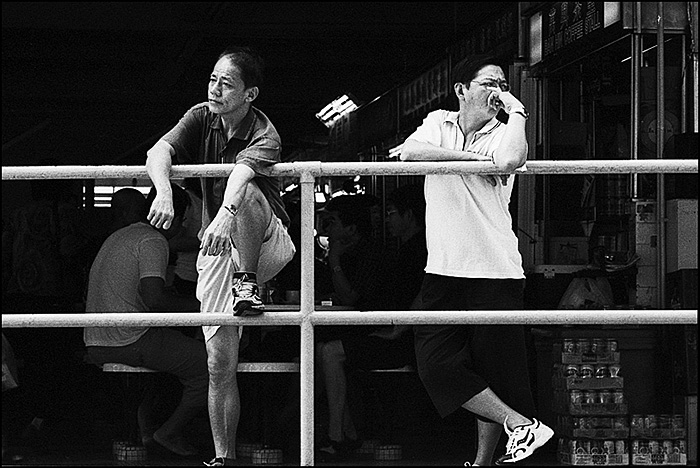
Singapore
The first week went fine. The problems began on the following Tuesday with the attack on the World Trade Centre in New York. Within a few short months our students found that they could no longer get student visas to the USA. By the following year the number of new students enrolling had collapsed, and with only one major course programme on offer the very existence of the college was under threat.
As my hours went down I found extra work tutoring at the Open University. I helped teachers who were upgrading their qualifications to degree level, first on the Humanities course, and then later supervising 3rd year students on their Language and Literacy projects.
I’d been introduced to critical thinking studies during my BA degree, in particular the need to evaluate sources and ask the right questions. Even so, over the years I had been quite enthusiastic about the connection between Jungian psychology and modern Astrology. I’d read widely on the subject and regularly charted the positions of the planets and so on. At the very least, it made more sense to see the universe as a clockwork mechanism than as the playground of some other-worldly being. I now had to teach a module on philosophy and logic, and reading up on the topic, especially in relation to the conflict between science and religion, meant there was no further room for cognitive dissonance. There was Science, and the rest was fantasy.
Thankfully I was also able to invent a context for my Master’s project and I devised an evaluation model for online Academic English courses. It was good to get that finished.
I had my father’s negatives sent to me from the UK and started to scan them. This was the most practical method to work through the several hundred frames that survived, and it was no doubt the first time it had been possible to view the entire negative archive as a collection of real images. They spanned his time in the Merchant Navy and with the Royal Air Force from around 1924 to 1942.
From the navigator’s seat in a Vickers Vincent biplane, he took a shot looking forward over the pilot’s shoulder as they approached Cairo in 1939. With the vibration of the plane I imagine that he wanted to keep the shutter speed as high as possible and therefore the depth of field is quite shallow. In the photograph it was a thoughtful compromise to keep the windshield of the plane sharp.
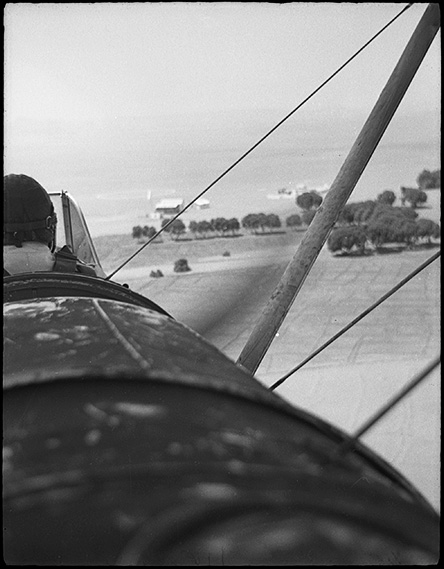
Vickers Vincent
The packets of negatives were all that remained of his spirit and culture. Photography can serve as an imprint of the person who took them since any negative strip is as much an autobiographical record of the photographer as it is a record of different subjects. The historical perspective was also interesting and having found shots he had taken of the Emperor of Ethiopia, Haile Selassie, and King George II of Greece, I did a little research online.
I got in touch with an air historian in Australia who had been writing about 211 Squadron. Don Clark was interested in some of the same personnel that my father had known in East Africa and Greece and we were able to swap notes. He was even able to dig out an autobiography by one of my father’s senior officers in Sudan. I discovered for the first time that he had used his middle name and was known as ‘Joe’.
The breadth of the World Wide Web was growing continuously and research that previously might have taken months or years could now be completed in the time it took for a single spin of the Earth. I thought back to my reading of Marshall McLuhan thirty years earlier and his concept of a ‘global village’. I wondered why it had taken so long.
I regularly cruised around online photography forums. Although the quality of digital photography was advancing steadily each year, and I had my own 2.4 Megapixel camera by then, there was a concurrent resurgence of interest in traditional film processes, particularly in black and white. This was partly fuelled by the collapse in value of professional film cameras as pro photographers were having to dump their old equipment to keep pace with editorial demands.
Almost every photography shop in Singapore now seemed to have an expanding shelf of second hand film equipment. A post on a forum described using software to manipulate an image to make it look like a soft focus pinhole photo, but that now seemed rather pointless given how much time and money had to be invested for the photographer to do this on a computer.
I made a couple of pinhole cameras as trials before designing a practical wooden box that would take an RB67 Polaroid holder. This meant learning several new skills all at once: making pinholes and handling Polaroids, as well as brushing up on my woodwork. Although I made a few small pieces of sculpture in Singapore, my impulse was to leave those tools and materials alone for a while and concentrate on investigating the mechanics that made photography possible.
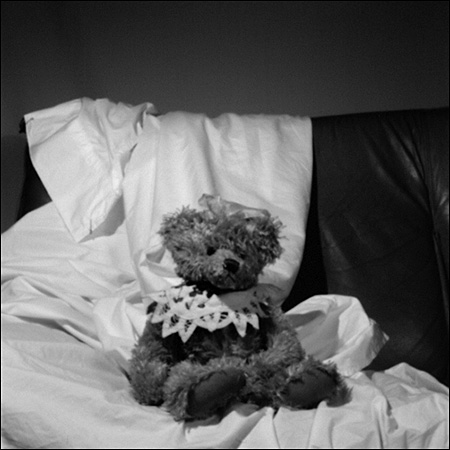
Pinhole Bear
My students were also interested, and with the extra time I now had with the reduction of my teaching hours I started a photography club at the college. Half a dozen joined up and most of them had 35mm film cameras with them. I led classes and workshops and we went out to exhibitions when possible. It was so successful that the following term I started a second class for the adjoining high school. Interestingly, all of the younger pupils had digital cameras.
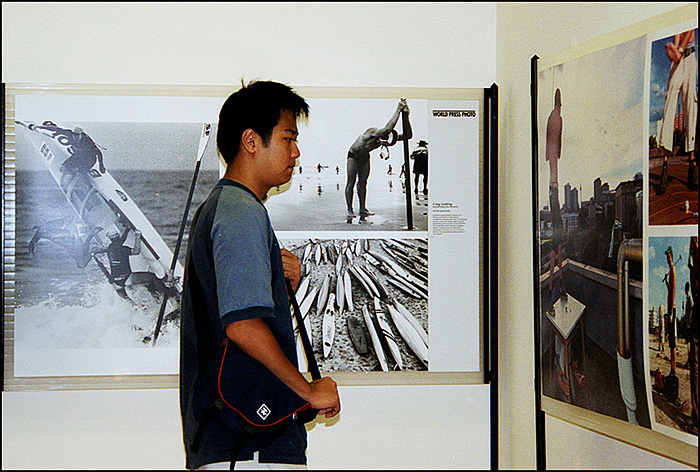
World Press Photo Exhibition
I found old camera lenses in the shops and picked up a classic Voigtlander camera from around 1929. I was attracted to the idea that I could expand my photographic vocabulary by exploring different lens and camera body combinations, and then set about designing some sheet film cameras from scratch. I studied online and taught myself to develop black and white film at home. I built some studio lights and hired one of my ex-students to model for me.
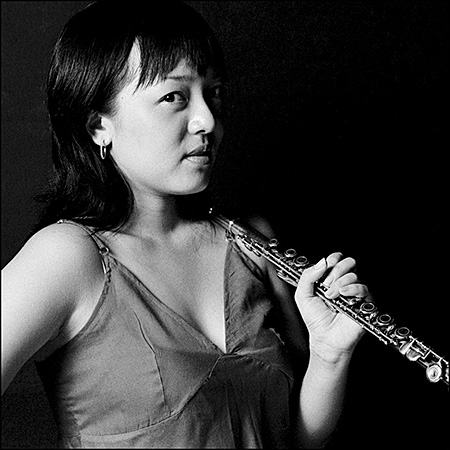
Girl with Flute
In my last year there, 2004, I took on additional work with the Singapore Institute of Management as by then my college work had gone down to just six hours a week. Even though they had doubled the hourly rate to keep on the minimum staff they required for the remaining students it was no longer sustainable and the college would soon close down completely. Now with three part time jobs I was able to stay afloat but the future was not looking bright; none of the employers could make any guesses about the classes that would be available in the autumn. My relationship had finally dissolved, and at the same time I picked up a bad lung infection, exacerbated by the climate and the brutal air-conditioning in some of the school buildings. My time in Singapore was coming to an end.
And possibly my career in teaching international students was coming to a close as well. The very first group I had had in Cambridge back in 1984 had been a lively bunch of high school kids from Venice. They had been great fun to work with, but so too was the last group I taught in Singapore in 2004. I made good friends; a few came from Vietnam or Indonesia but the majority were from all across mainland China. We had debates, word games, projects and trips to the zoo, and they worked hard. Two of the girls came to the airport to see me off.
| Early Days | Late Teens | Bilbao to Copenhagen | London to Cambridge |
| Bologna to Swansea | Salalah to Singapore | Wales | Untitled, Unfinished |